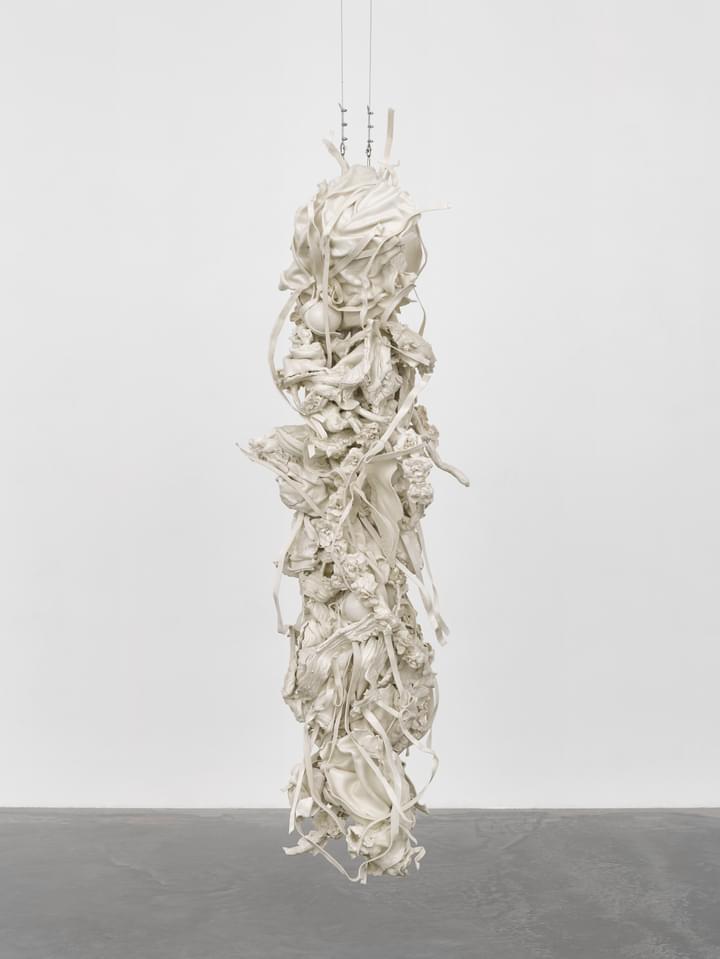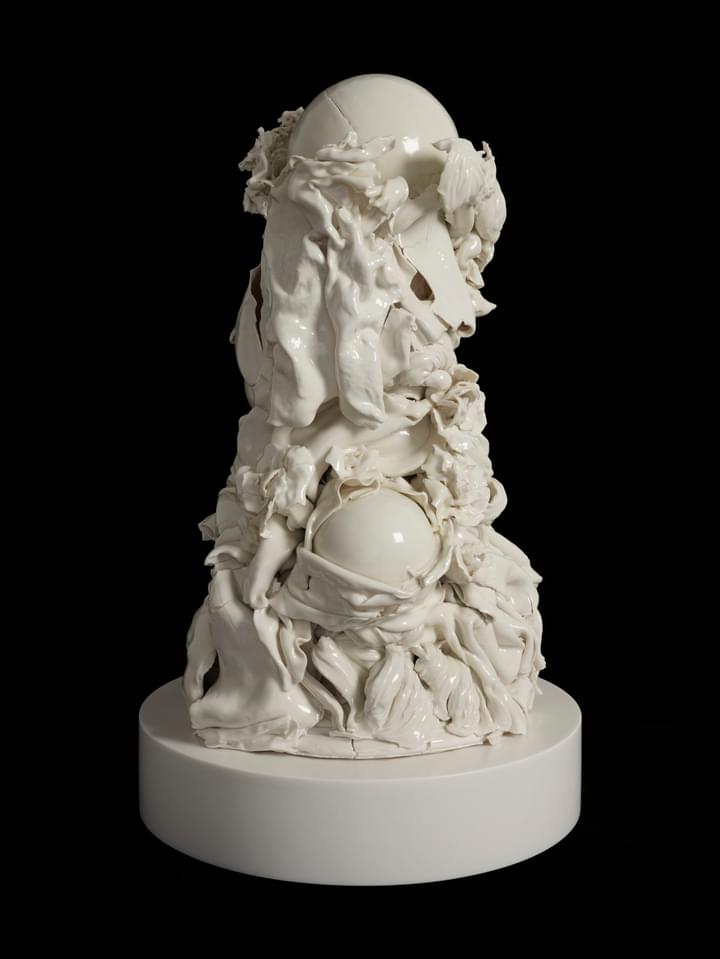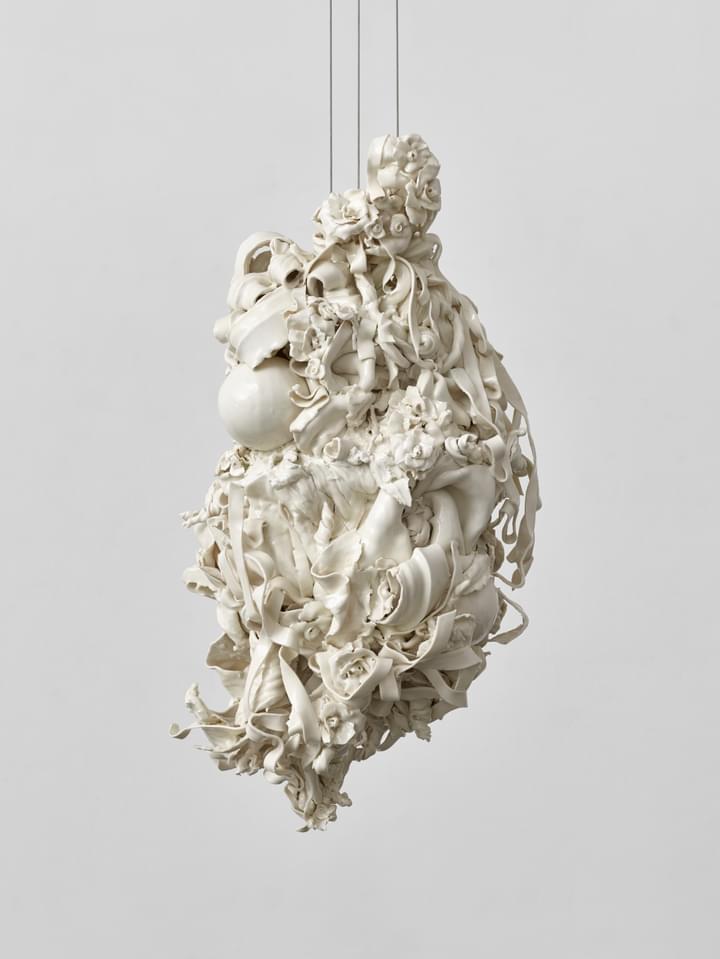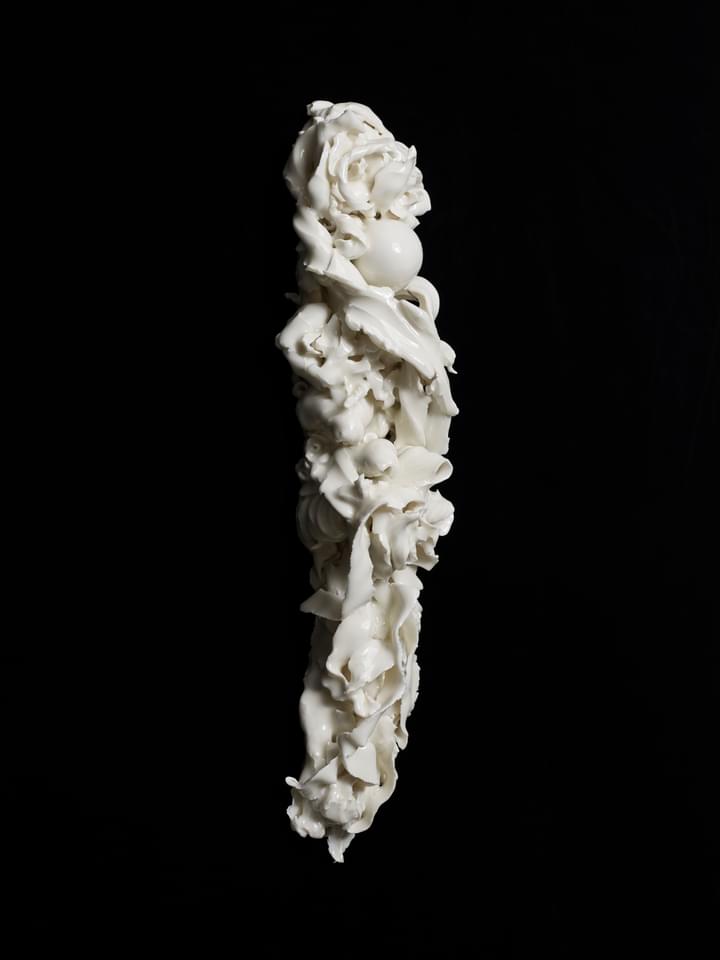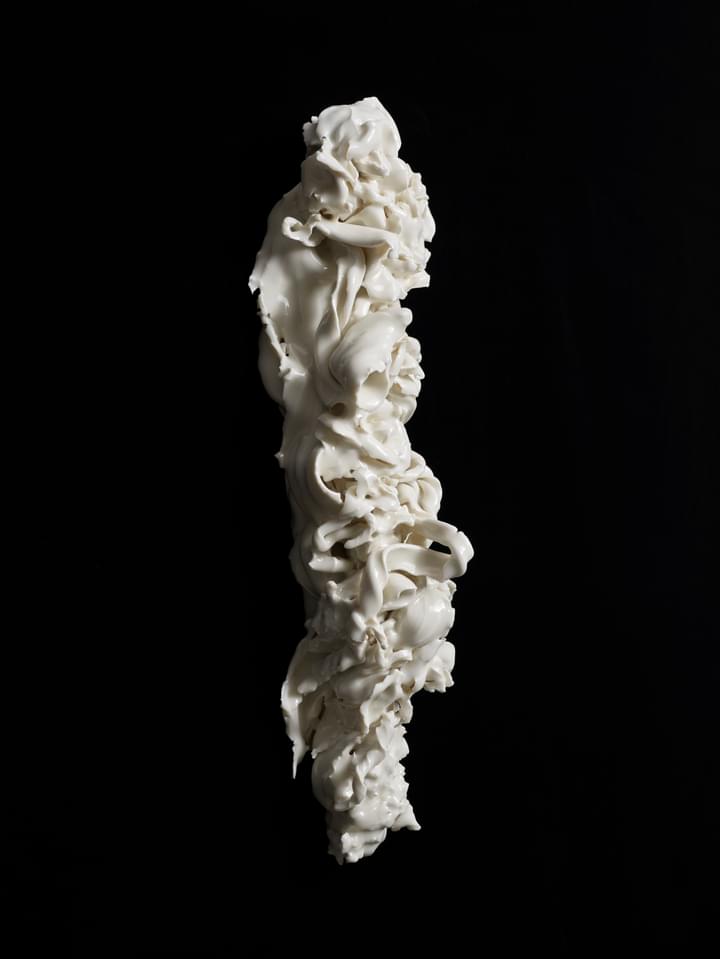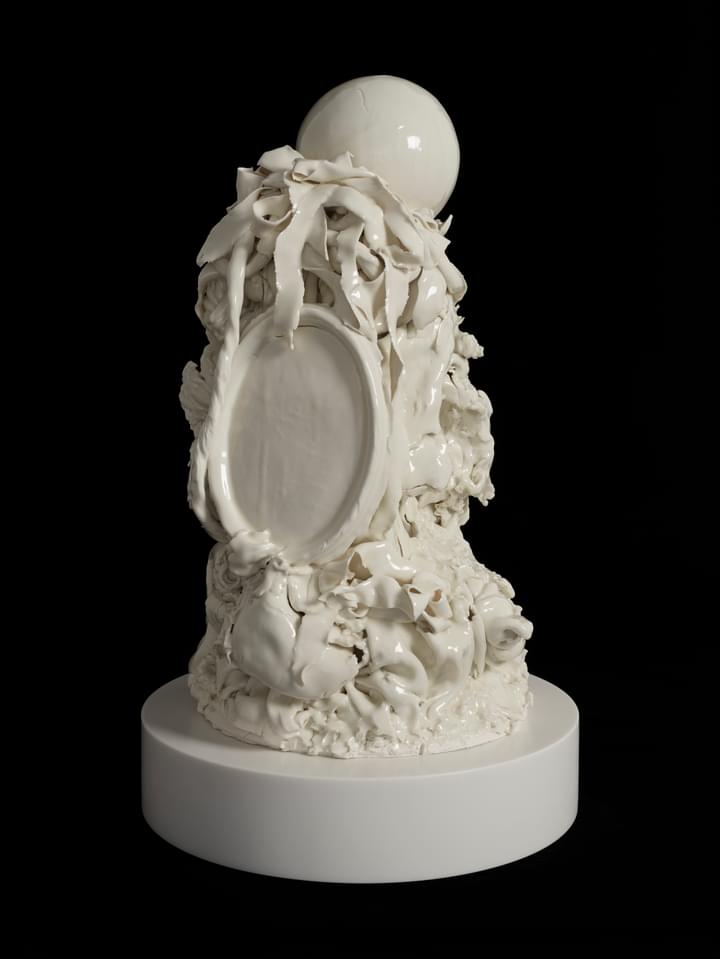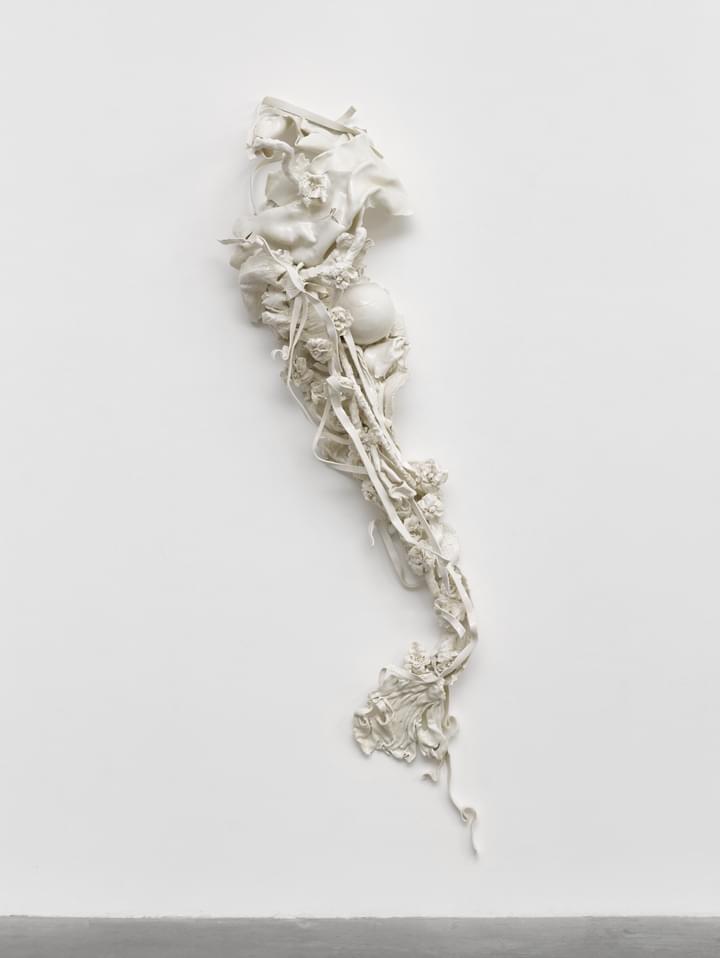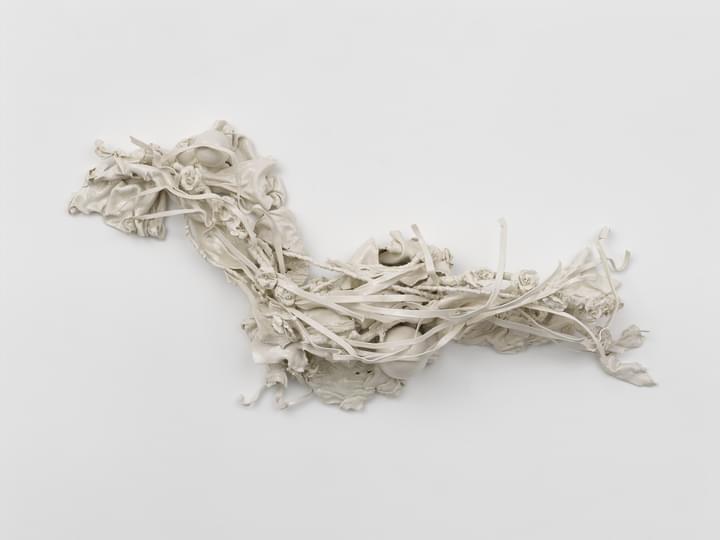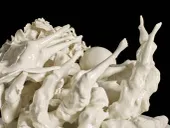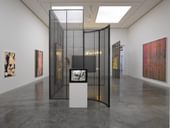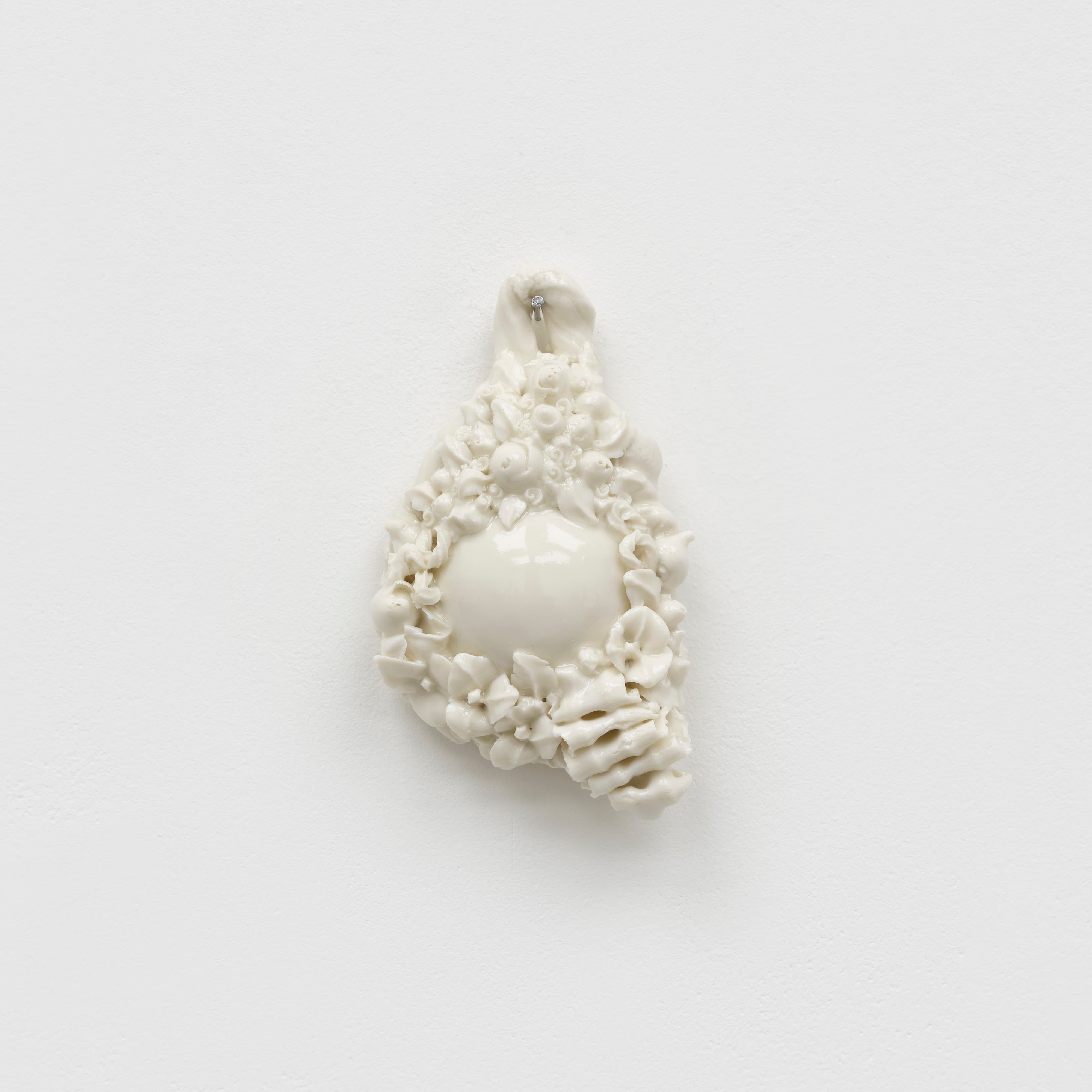
Quill, 2021
Rachel Kneebone
Lives and works in London
B. 1973
Artworks

Contact us about available Rachel Kneebone works
Exhibitions
Gallery Exhibition
Rachel Kneebone
Raft
7 July – 4 September 2021
Gallery Exhibition
Rachel Kneebone
Ovid in Exile
27 May – 19 August 2017
Gallery Exhibition
Rachel Kneebone
399 Days
18 July – 28 September 2014
Gallery Exhibition
Rachel Kneebone
Lamentations 2010
19 November 2010 – 22 January 2011
Museum Exhibitions
Find out more29 May - 16 June 2024 | London
14 May - 9 October 2022
10 July 2021 - 24 April 2022
1 April 2017 - 5 December 2019
Films
Hannah Gruy on Rachel Kneebone's 'Shell' and 'Quill'
Hannah Gruy, Director at White Cube discusses Rachel Kneebone's works Shell and Quill, which were both featured in her 2021 exhibition at White Cube Mason's Yard.
Rachel Kneebone, '399 Days'
Rachel Kneebone details the processes behind her exhibition '399 Days' at White Cube Bermondsey in 2014.
Rachel Kneebone, 'The Dance Project' at Touchstones Rochdale
Rachel Kneebone talks about her exhibition at Touchstones in Rochdale, UK (2018 – 2019).
Hannah Gruy on Rachel Kneebone's 'Shell' and 'Quill'
Hannah Gruy, Director at White Cube discusses Rachel Kneebone's works Shell and Quill, which were both featured in her 2021 exhibition at White Cube Mason's Yard.
Rachel Kneebone and Catherine Morris
Rachel Kneebone in conversation with Catherine Morris about her 2012 exhibition 'Regarding Rodin' at the Brooklyn Museum.
News
Find out more7 February 2025 | London
22 October 2022 - 23 February 2023 | Various venues, Bangkok
Prints & Multiples
View all Prints & MultiplesCreate an Account
To view available artworks and access prices.


